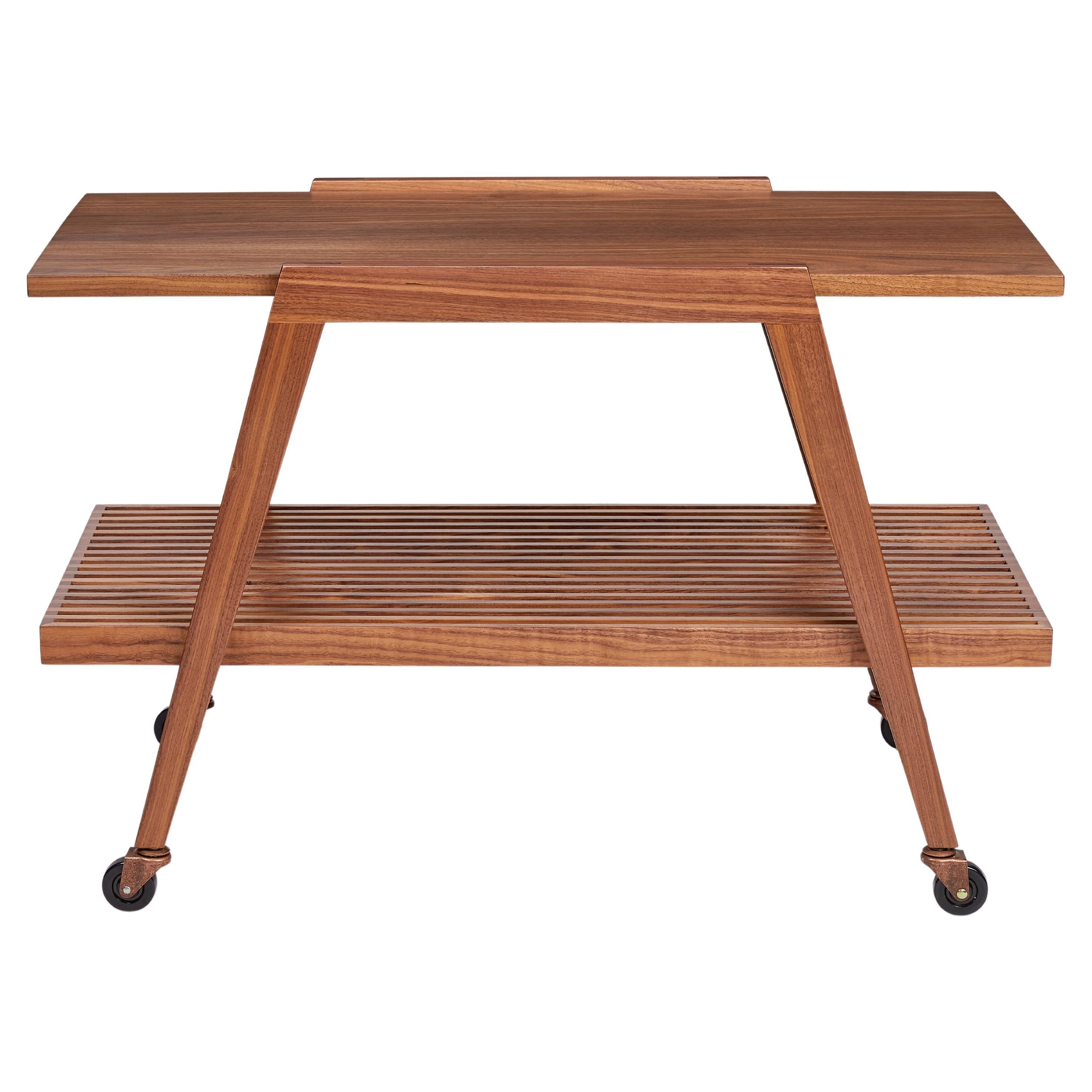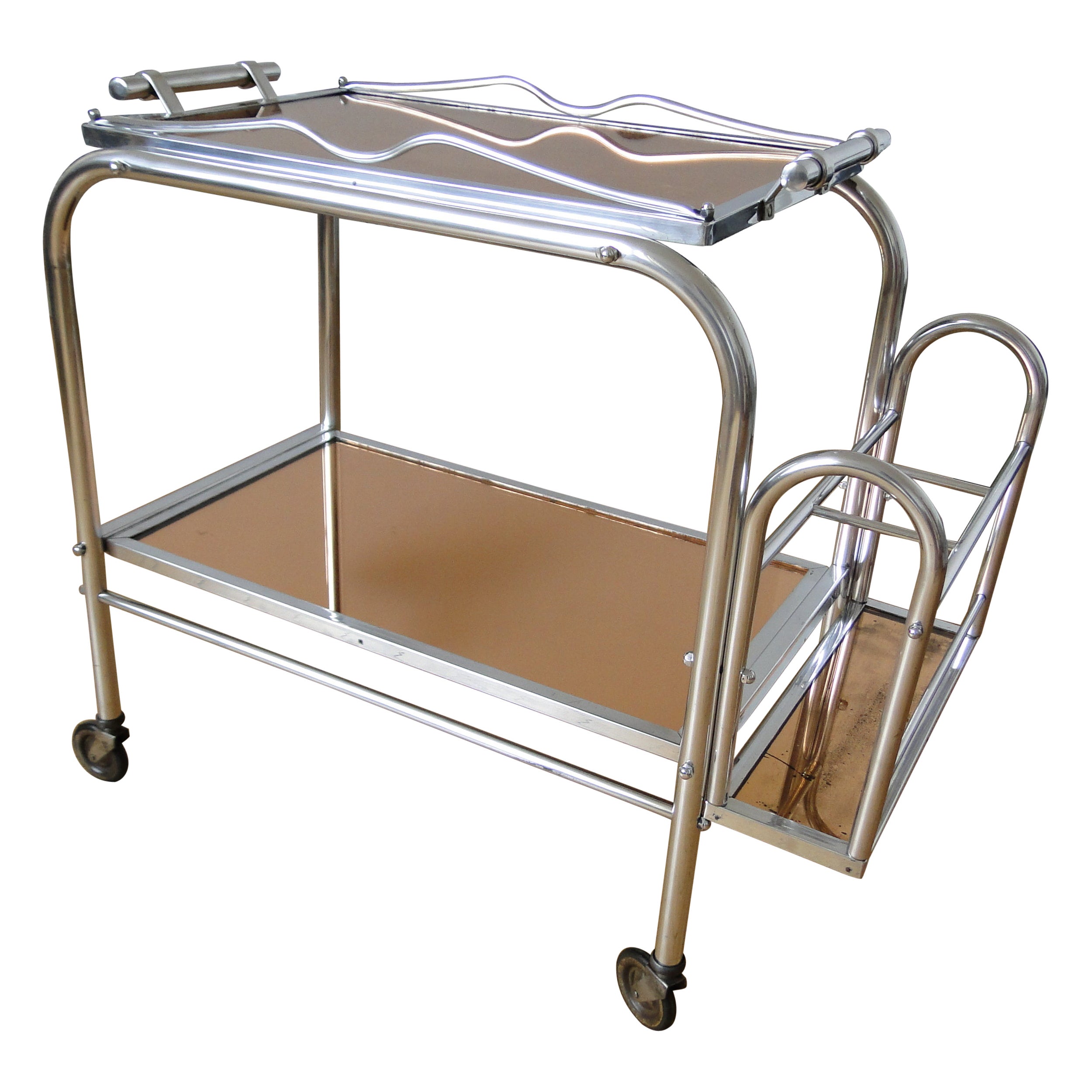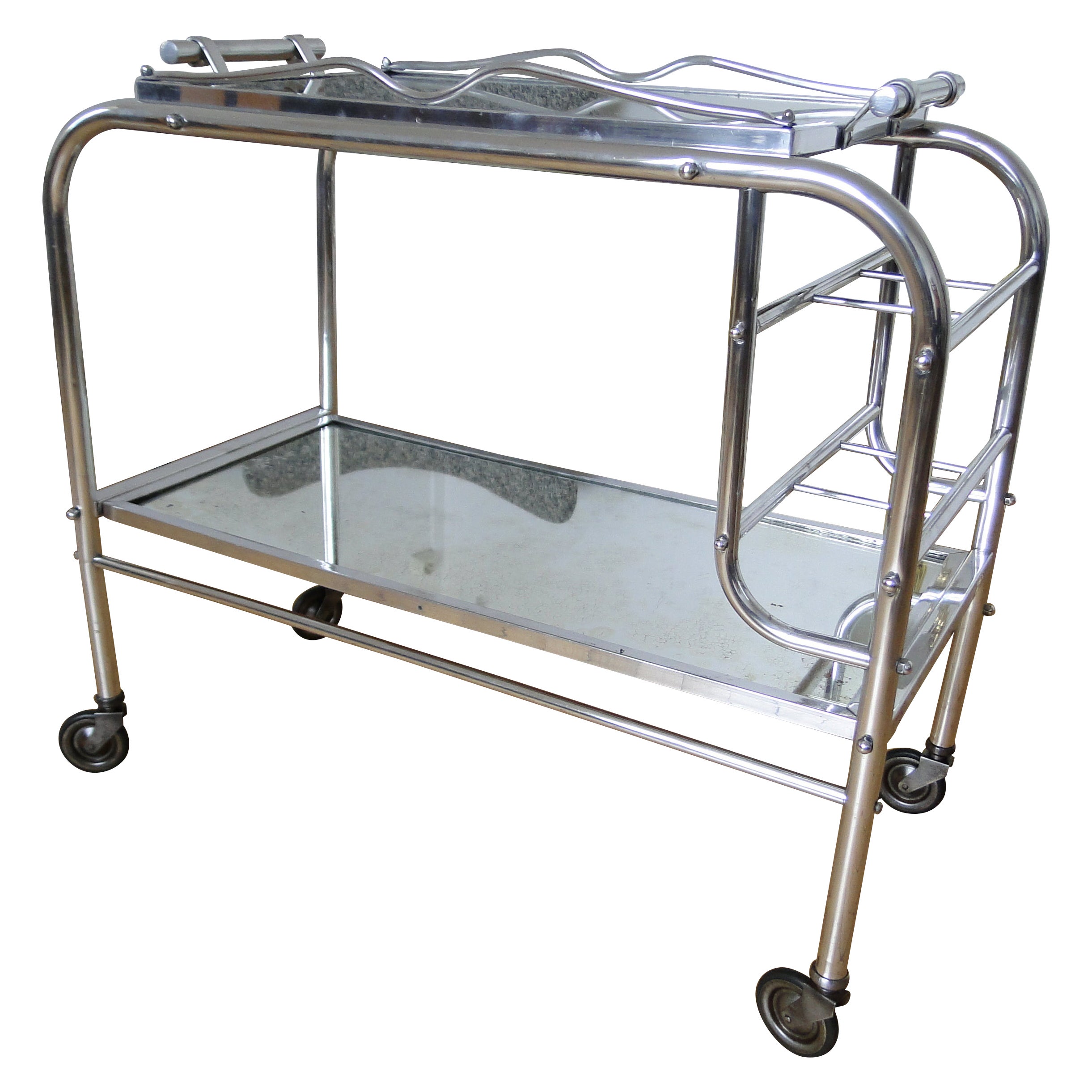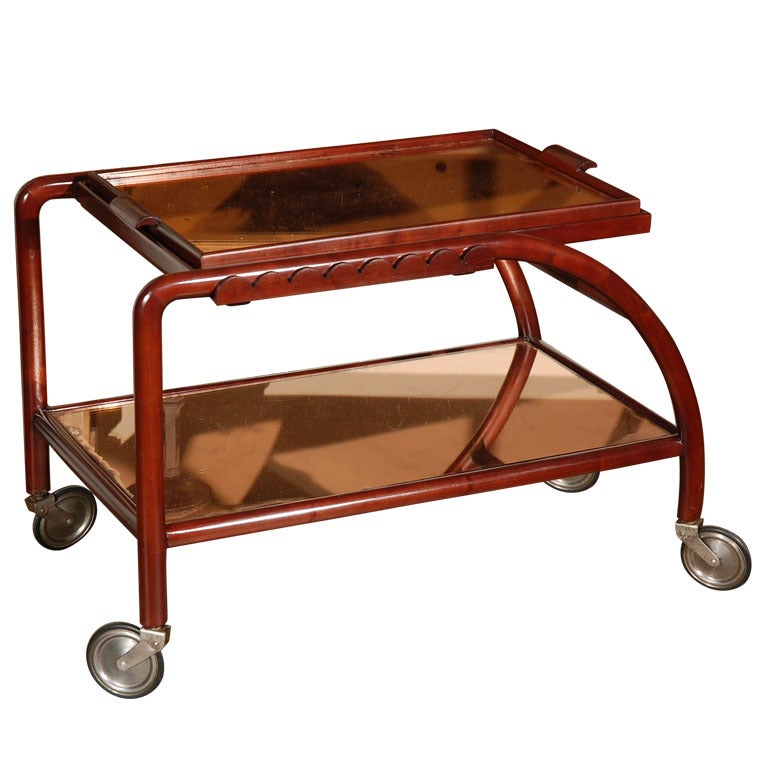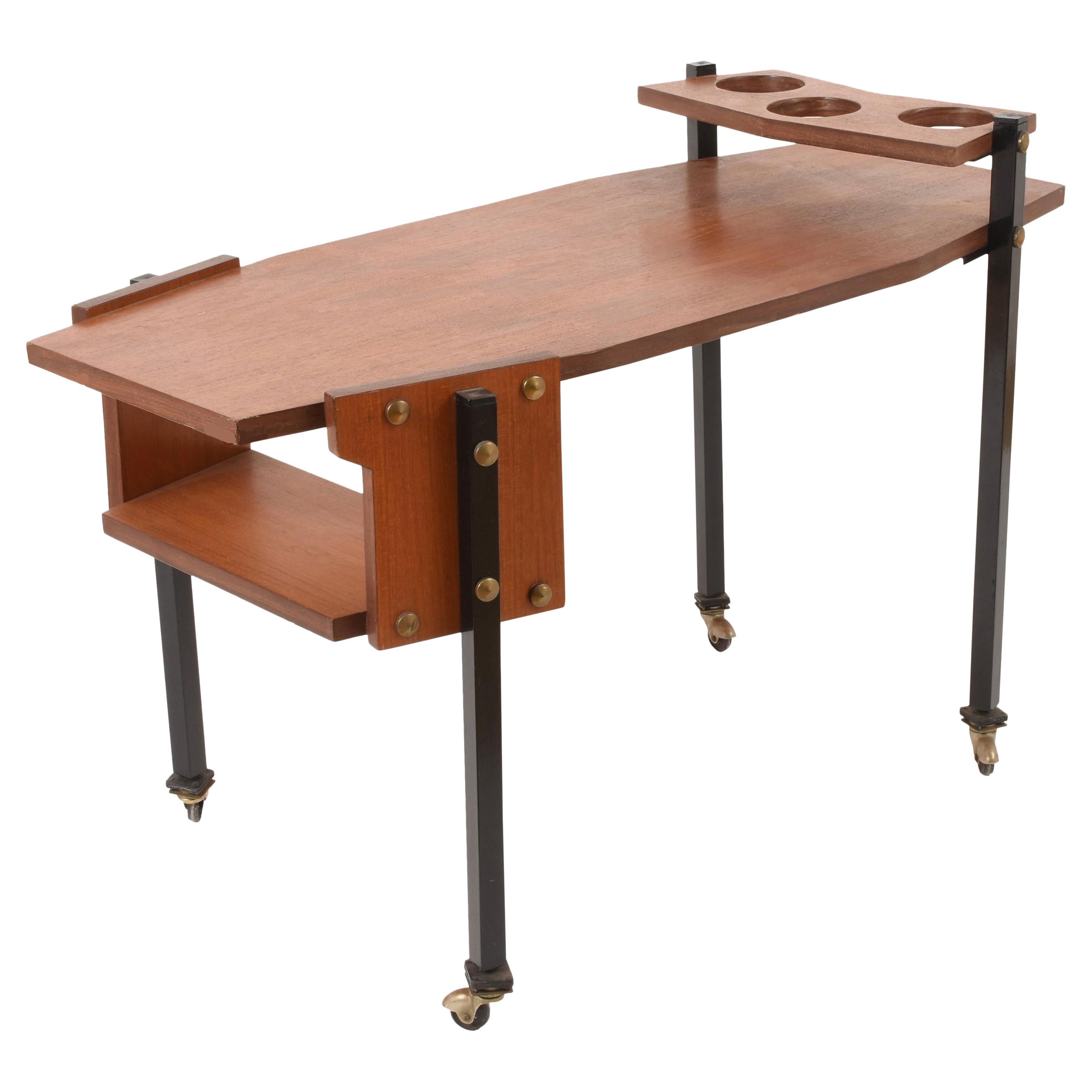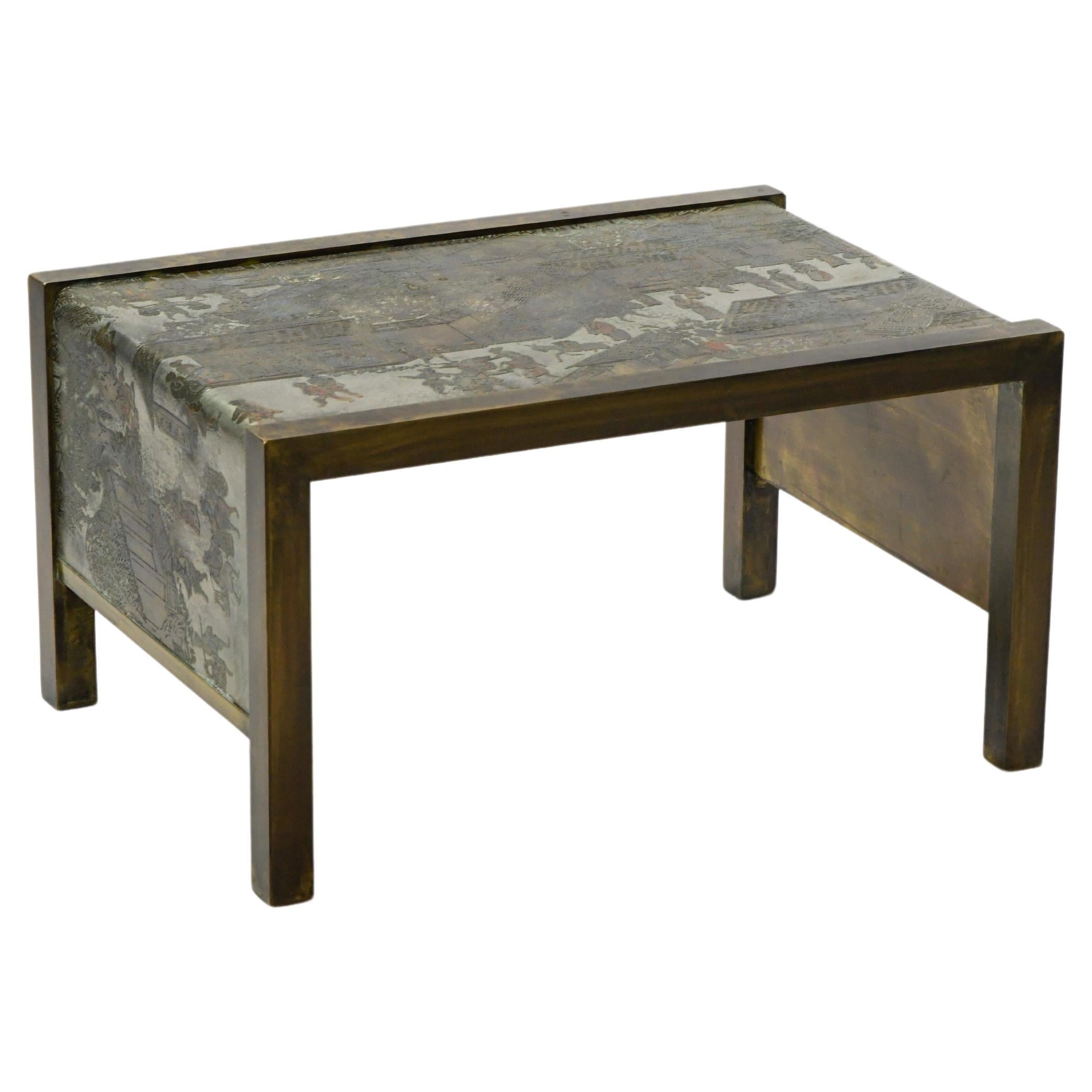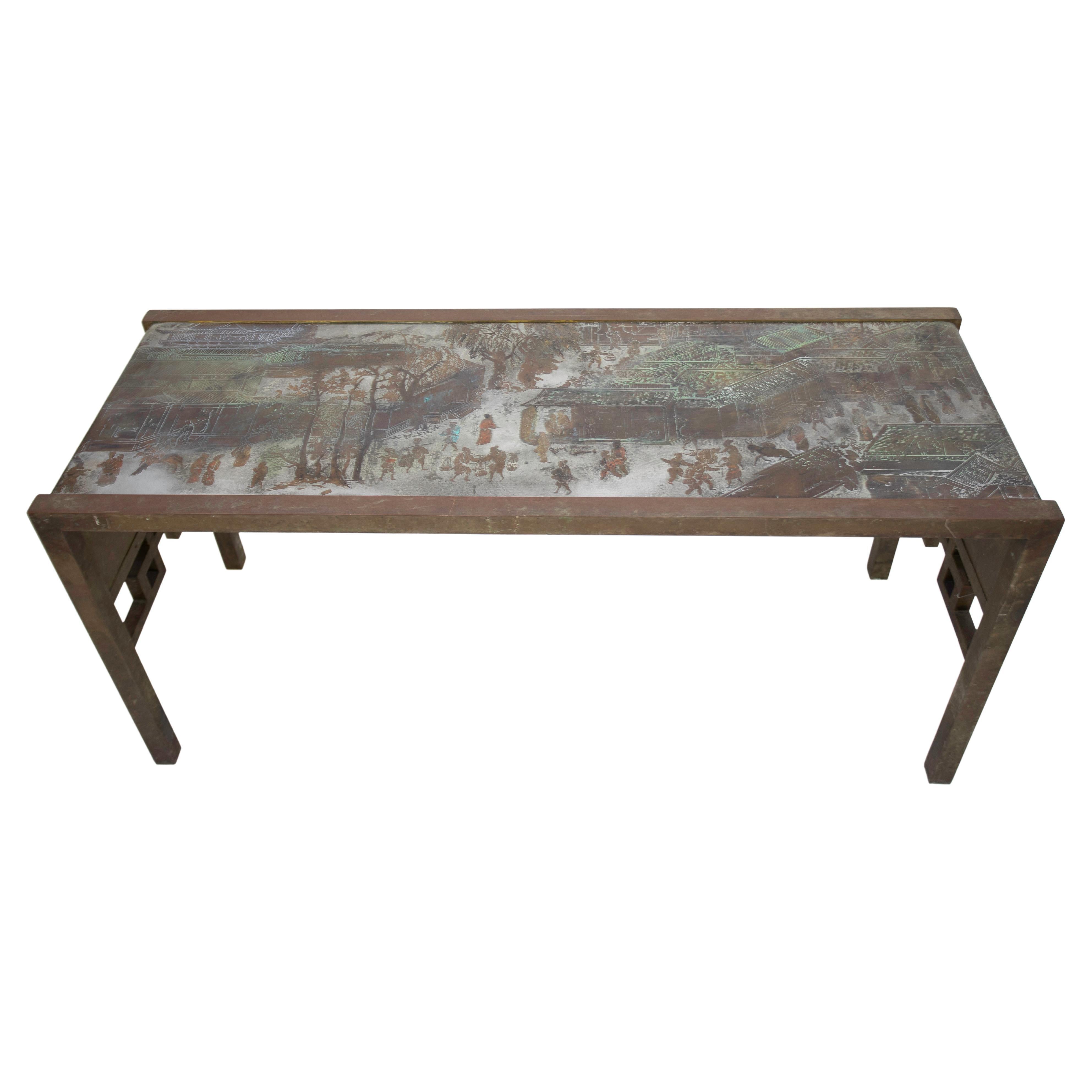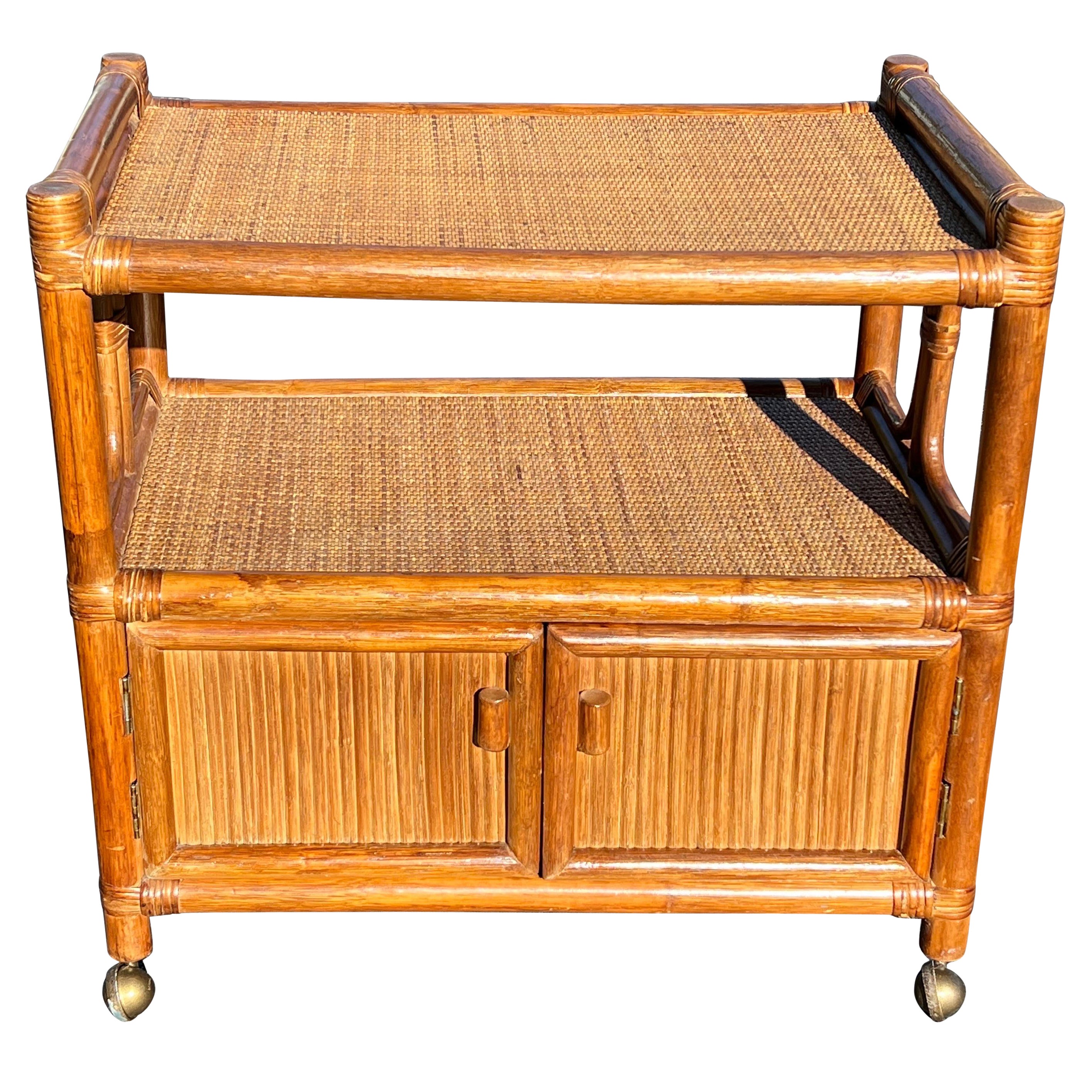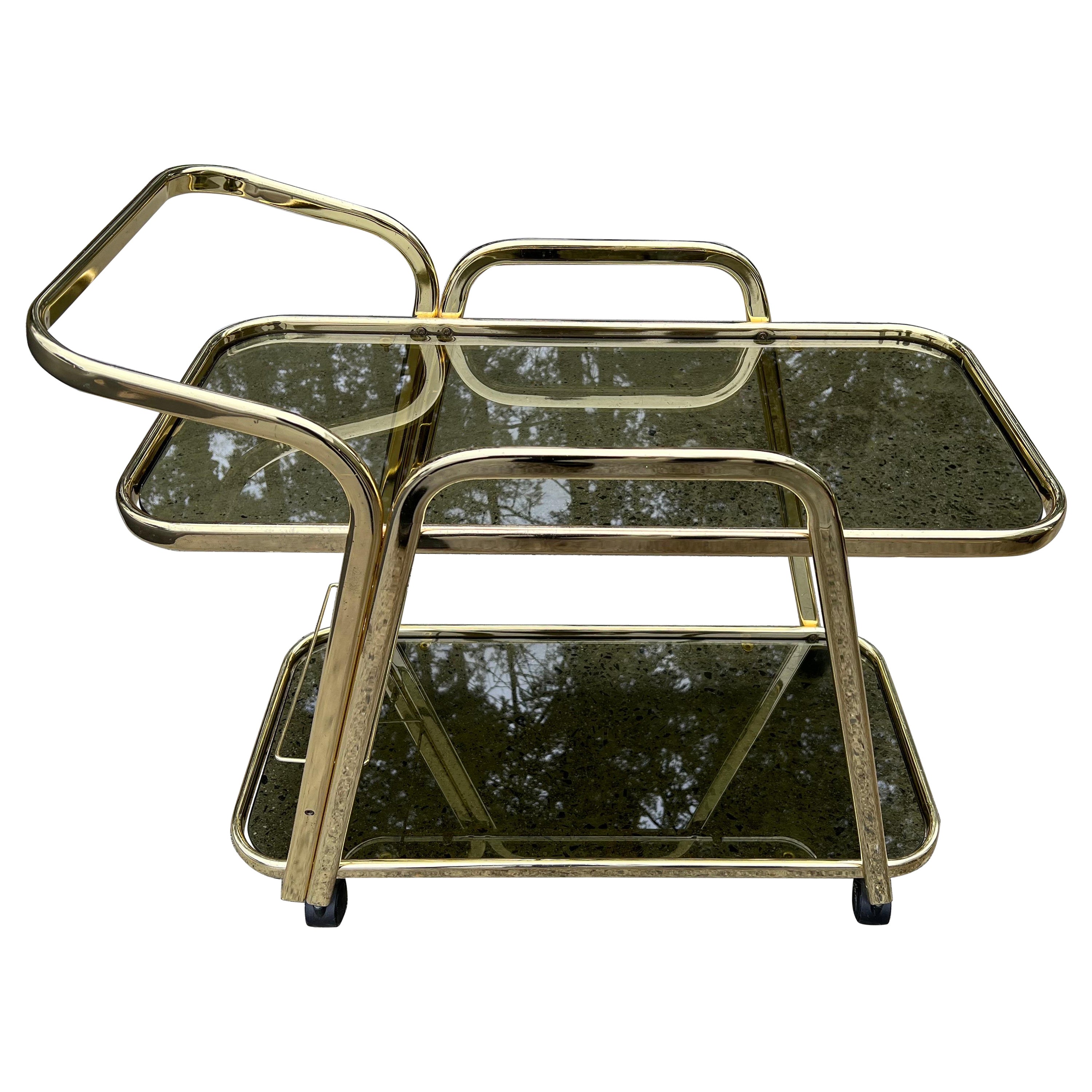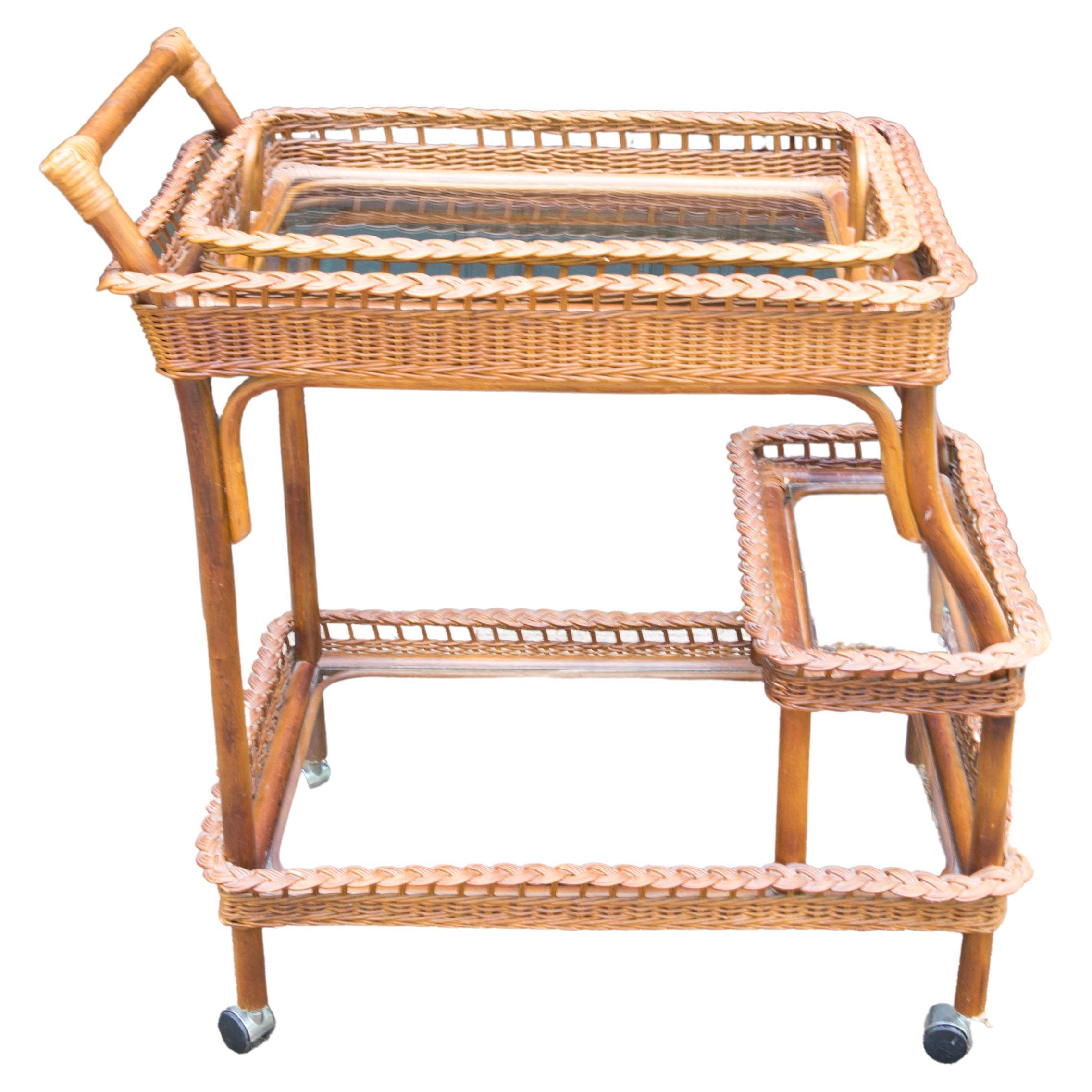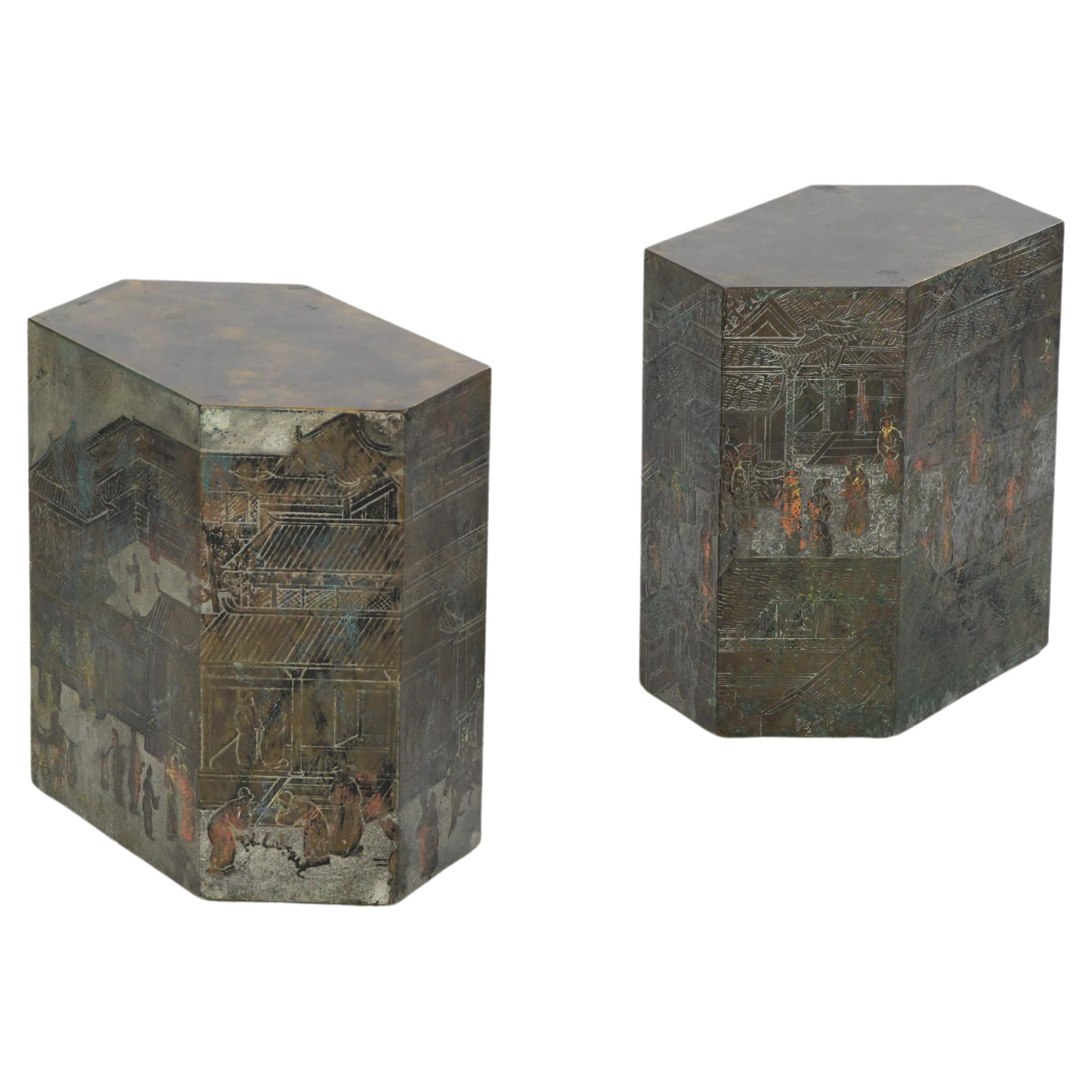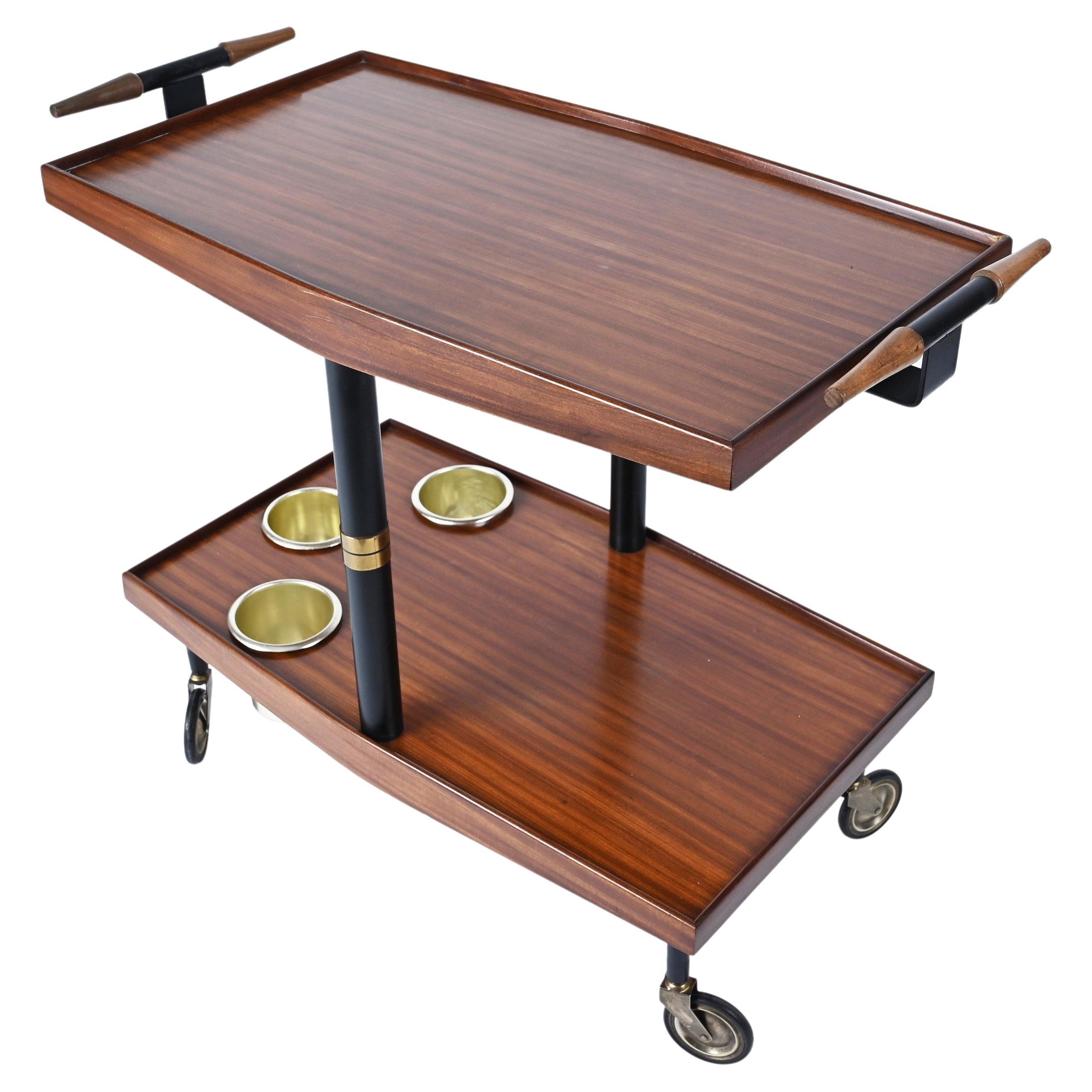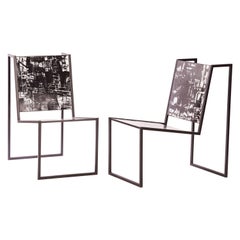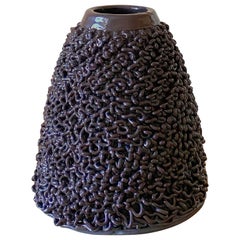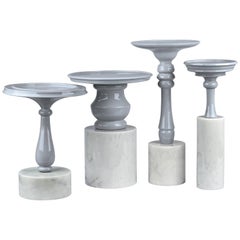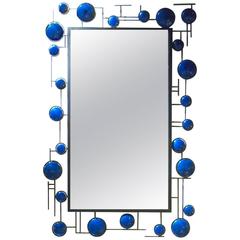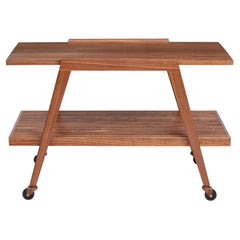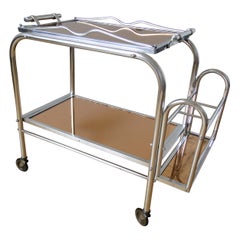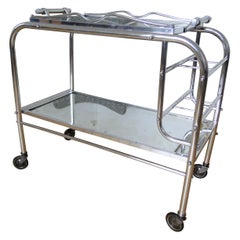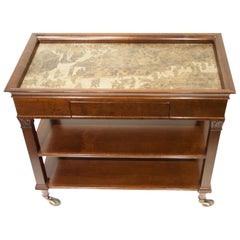
Philip and Kelvin LaVern Spring Festival Tea Cart Single Edition
View Similar Items
Philip and Kelvin LaVern Spring Festival Tea Cart Single Edition
About the Item
- Creator:Philip and Kelvin LaVerne (Designer)
- Dimensions:Height: 54.5 in (138.43 cm)Width: 39.75 in (100.97 cm)Depth: 19.75 in (50.17 cm)
- Materials and Techniques:
- Place of Origin:
- Period:
- Date of Manufacture:1940
- Condition:
- Seller Location:New York, NY
- Reference Number:1stDibs: LU1834318733352
Philip and Kelvin LaVerne
Look closely at any vintage furniture designed by father-son duo Philip and Kelvin LaVerne and a cacophony of stylistic influences reveals itself.
The LaVernes’ position at the intersection of art and design was the result of their combined backgrounds: Philip (1907–87) studied painting with Ashcan School artist John Sloan at the Art Students League of New York, while his son, Kelvin (b. 1937), attended the Parsons School of Design, taking classes in art history, furniture design and metalwork. The resulting merge of stylistic elements and innovative processes make for singular designs that defy categorization, striking a balance between modern and traditional, intricate and minimal, art piece and functional item. Their work was also strikingly different from the modern furniture created by Philip’s brother Erwine and his wife, Estelle, of Laverne Originals.
The LaVernes began producing one-of-a-kind furniture and sculpture in the mid-1950s out of a studio on Wooster Street in New York City before opening a showroom on Manhattan’s East 57th Street. As their 1960s advertisements declared: “It’s not just functional and not just art, it’s an investment.”
The LaVernes married a stunning array of techniques and styles to achieve their singular, deeply layered look for one-of-a-kind and limited-edition pieces. Chinoiserie motifs abound on many of their acid-etched tables, but art from ancient Greece and Egypt also served as inspiration. The influence of figurative sculptors is evident in designs like coffee tables and side tables with bronze bodies serving as frames or bases; other pieces, meanwhile, have deeply detailed surfaces and strikingly simple silhouettes.
The duo developed their own unconventional methods — sometimes to an extreme — for finishing their pieces: Techniques employed by the LaVernes included acid washing and burying furniture underground in a mixture of soil and chemicals to achieve a desired patina through oxidation. While they sometimes used pewter and silver, bronze was one of their most commonly employed materials, either etched or cast and sometimes paired with glass tops. Their partnership ended when Philip died in 1987 and Kelvin shifted his practice to sculpture.
Find an extraordinary range of vintage Philip and Kelvin LaVerne tables, decorative objects and other furniture on 1stDibs.
More From This Seller
View All2010s Paraguayan Chairs
Steel
2010s Ceramics
Porcelain
2010s Italian Tables
Carrara Marble
21st Century and Contemporary French Wall Mirrors
Copper, Enamel
21st Century and Contemporary French Abstract Sculptures
Stone, Lava, Iron
21st Century and Contemporary French Table Lamps
Crystal, Metal
You May Also Like
21st Century and Contemporary American Mid-Century Modern Carts and Bar ...
Brass
Vintage 1950s French Mid-Century Modern Carts and Bar Carts
Metal, Aluminum
Vintage 1950s French Mid-Century Modern Carts and Bar Carts
Metal, Aluminum
Vintage 1940s Italian Carts and Bar Carts
Metal
Vintage 1960s Scandinavian Mid-Century Modern Carts and Bar Carts
Brass, Metal
Vintage 1960s American Mid-Century Modern Coffee and Cocktail Tables
Brass, Bronze, Pewter
Recently Viewed
View AllRead More
Hechizoo’s Original Sin Rug Tempts with Shimmering Copper, Tin and Bronze
Embroidered with snakes, turtles, birds and vines, it celebrates a dazzling natural world before the arrival of Adam and Eve.
At Cristina Grajales, Two Artists Contemplate Universes Large and Small
The otherworldly work of Paula Hayes and Randy Polumbo glitters, shines and glows in the exhibition “Via Lactea.”
